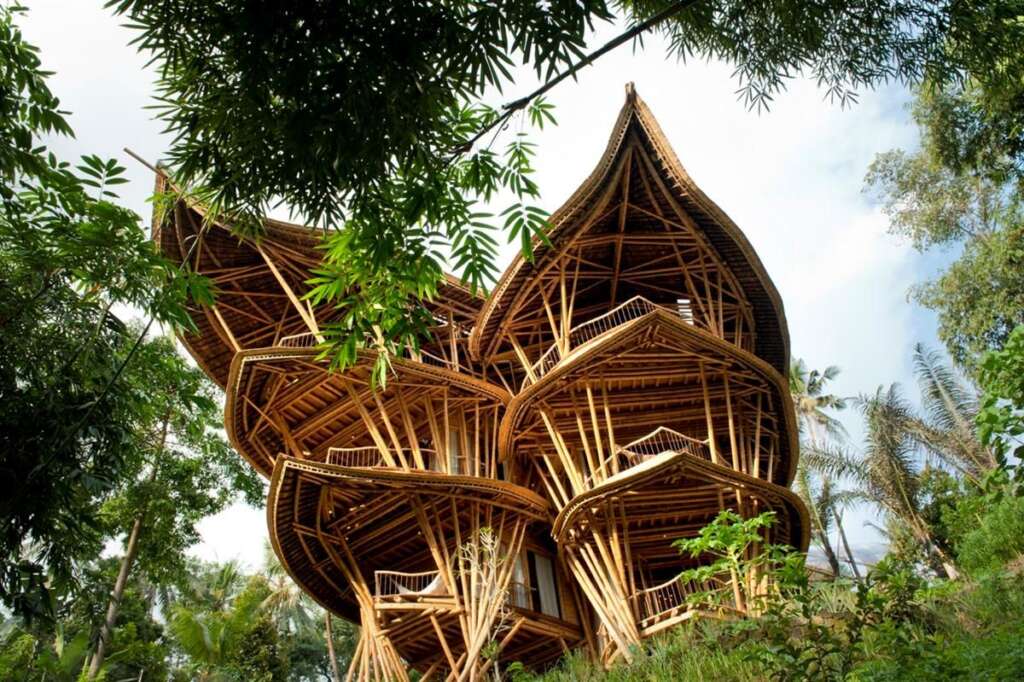Share This Article
In today’s world, where sustainability and eco-friendliness are becoming priorities in construction, the question often arises: Can bamboo replace concrete? Bamboo has been called the “green steel” for its incredible strength and rapid growth. But can this natural material truly stand in for concrete, the cornerstone of modern construction? Let’s dive into the advantages and challenges of bamboo as a building material, and explore if it’s a practical alternative to concrete.
What Is Bamboo? A Quick Overview
Bamboo is a fast-growing grass found primarily in tropical and subtropical regions. It can grow several feet in just a few days and reaches maturity in 3-5 years, compared to decades for most trees. This rapid growth, combined with its natural strength and flexibility, makes bamboo a fascinating candidate for sustainable construction.
Why Consider Bamboo as a Concrete Alternative?
Concrete is the most widely used building material worldwide due to its durability, strength, and versatility. However, concrete production is responsible for roughly 8% of global CO2 emissions. This environmental cost has pushed architects, engineers, and builders to explore greener alternatives—like bamboo.
Bamboo is renewable, carbon-negative, and requires very little energy to harvest and process. Its unique combination of tensile strength and light weight allows it to absorb shocks and sway with the wind—qualities concrete cannot match.

Pros of Using Bamboo in Construction
1. Sustainability and Eco-Friendliness
Bamboo absorbs CO2 while growing and produces 35% more oxygen than an equivalent stand of trees. It regenerates naturally without replanting and needs minimal water and pesticides. This makes it an extremely sustainable material compared to the carbon-intensive concrete.
2. Strength and Flexibility
Surprisingly, bamboo’s tensile strength rivals steel, making it strong yet flexible. This flexibility is beneficial in earthquake-prone areas, as bamboo structures can absorb seismic forces better than rigid concrete.
3. Lightweight and Easy to Work With
Bamboo is lightweight, making transportation and construction faster and less costly. It can be cut and assembled with simple tools, which is especially useful in remote or low-resource areas.
4. Thermal Insulation
Bamboo has natural insulating properties, keeping interiors cooler in hot climates and warmer in cold conditions, which helps reduce energy consumption for heating and cooling.
5. Aesthetic Appeal
Bamboo offers a natural, warm look that is both modern and traditional. It can be used structurally or decoratively, lending unique charm and character to buildings.
Cons and Challenges of Using Bamboo
1. Durability and Maintenance
Bamboo is organic and susceptible to pests, rot, and fungal attacks if not treated properly. Without adequate protection (like chemical treatment or varnishing), bamboo can degrade faster than concrete.
2. Building Codes and Standards
In many countries, bamboo is not yet recognized as a mainstream construction material. This lack of formal standards limits its use in commercial and large-scale projects.
3. Load-Bearing Limitations
While strong in tension, bamboo has lower compressive strength compared to concrete. This limits its use for heavy-load-bearing foundations or multi-story buildings without combining it with other materials.
4. Moisture Sensitivity
Bamboo can absorb moisture, leading to swelling and shrinkage. Without proper sealing, this can cause structural instability over time.
5. Fire Resistance
Bamboo is combustible and requires treatment to improve its fire resistance. Concrete, in contrast, is naturally fireproof.
Also Read – What Is Landscape Architecture? Exploring the Art of Designing with Nature
Can Bamboo Fully Replace Concrete?
At present, bamboo cannot entirely replace concrete, especially in large-scale, high-rise, or infrastructure projects that require extreme compressive strength and durability. However, it is an excellent alternative or complement to concrete in:
- Low-rise residential buildings
- Temporary structures and pavilions
- Earthquake-resilient buildings in vulnerable regions
- Decorative and interior architectural elements
- Sustainable and green building projects
Innovative hybrid designs use bamboo alongside concrete and steel, blending the best of all materials to achieve sustainability without compromising safety.
Examples of Bamboo in Modern Construction
- Green School, Bali: A famous example where bamboo is used extensively for classrooms, blending with nature and showcasing durability.

- Bamboo Sports Hall, Laos: A large-scale bamboo structure designed to withstand natural elements while serving community needs.

- Naman Retreat, Vietnam: Luxury villas incorporate bamboo for aesthetic and environmental benefits.
- Shigeru Ban’s Bamboo Houses: The acclaimed architect has pioneered bamboo use in disaster relief housing and innovative designs.

Conclusion: Bamboo Is Not a Silver Bullet but a Powerful Ally
Bamboo’s potential as a sustainable construction material is immense. While it won’t completely replace concrete anytime soon, its eco-friendly nature, strength, and beauty make it an essential part of the future of green building. With proper treatment, standards, and design innovation, bamboo can significantly reduce the environmental footprint of construction while offering flexibility and aesthetic appeal.
If you’re considering sustainable architecture, incorporating bamboo—either alone or in combination with concrete—can be a smart and stylish choice that respects both people and the planet.
